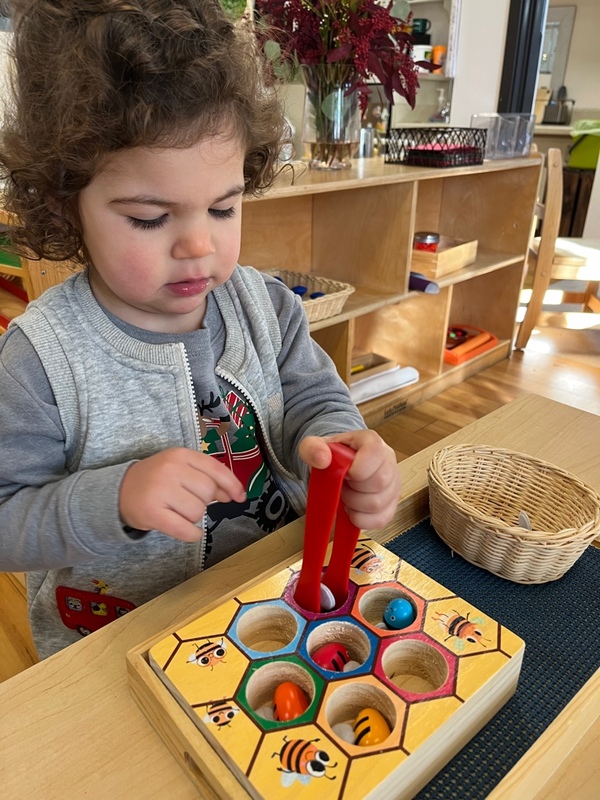(858) 759-0631
In the post called Toilet Learning Vs. Toilet Training: Part One, we addressed the difference between child toilet learning and toilet training also referred to as potty training. Child toilet training is something that is adult directed; toilet learning is when the child is involved in their own learning. In this post we will further discuss the language and signs used to communicate when a child is ready for toilet learning as well as bowl movement control and some routine ideas to help make this an easy process for the child.
Toilet Learning and Language
It is important that children understand the language you use during toilet learning. Quite often there is some embarrassment in using certain words. Remember to consider you attitude when interacting with children; if you are embarrassed talking about certain body part or bodily functions, your child could also learn this attitude. Using the toilet is an everyday event and being comfortable explaining the process and body parts to children is important as it is a natural part of our lives.
It is important to feel comfortable using adult words around children like to describe body parts and functions. This ensure that your child will not have to use 'baby words' (e.g. wee and poo) and demonstrates that you see your child as a capable toilet learner.
We recommend considering your language when inviting children to use the toilet always keep it clear, direct and positive, for example "You may go and sit on the toilet/ potty" if the child refuses maintain positive language "you need to sit on the toilet so that you can urinate". Never force a child on the potty or toilet against their will or use language in a negative way saying they "must sit on the toilet".
When a child urinates on themselves try not to refer to this as an 'accident' tell them "you have urinated we need to sit on the potty when we urinate" making sure to sit the child on the potty after the event and change wet underpants. Always remain calm and in control of emotions model this behavior for the child.
Signs of Readiness Checklist:
- Physical Readiness
- Child can stay dry for longer periods of time, or overnight
- Child knows the feelings that signal he/she needs to use the bathroom
- Child can pull down own pants, and pull them up
- Child can get him or herself to the toilet
- Mental and Language Readiness
- Child can follow simple directions
- Child can point to wet or soiled clothes and ask to be changed
- Child pays attention to the physical signals even when she is doing something else (a challenge for many children, which is why accidents are so common)
- Child knows the words for using the toilet, and can tell an adult when he/she needs to go
- Child has asked to wear grown-up underwear
- Emotional Readiness
- Child seeks privacy when going in diaper
- Child shows interest in using the toilet-may want to put paper in and flush it
- Child shows curiosity at other people's toilet habits
- Child has decided he/she wants to use the toilet
- Child is not afraid of the toilet
Bowel Movement Control
In toilet learning, urination is often the focus; this is usually because it is a much harder skill to control liquids rather that mass. However, in many children bowel movement control occurs much later. There are many individual factors that can contribute to this including physical, emotional and mental readiness.
Bowel movement control sometimes happens before urinary control. If they are regularly going to the toilet to urinate, chances are they may have a bowel movement while urinating. It is for this reason that boys should preferably sit instead of stand during the first stages of toilet learning until they have mastered bowel movements.
Every child is different in learning this skill; many children are aware of when they are having a BM but will often be shy in telling an adult or not know what to do. It is important to build up trust and reassure the child that everything is ok. Many children who are showing signs of readiness will want to ask questions and look at what is happening while you are changing their BM. It may be helpful to talk the child through what is happening in their bodies and include them in the process as much as possible.
Many children have Bowel Movements at the same time each day; this predictability can be used as a tool in helping the child succeed in BM control. Writing a chart of times the child is likely to have a BM and looking for other signs (body posture and facial expression) can help signal that the child should sit on a potty or toilet. It also helps chart the frequency of the child's BMs, on occasion if the child is feeling anxious about passing BMs they may hold them and become constipated.
Toileting Routine
- Wake time - the child is allowed to sit on the potty after the diaper is removed from the night.
- He/she is then put in training pants/ underpants.
- Plastic coverings over underpants may be used.
- Constantly ask the child to go the toilet if they need to.
- Sit them on the potty when they wake in the morning, before going anywhere outside of the home, before and after sleep time and after meals.
Hope these tips help you and your toddler through the toileting process!
–Miss Cristina, Ladybug Teacher
Blog Cateogry:
Featured Image:

